Do you know that the clavicle or collarbone is one of the most frequently broken bones in the human body?
It plays an important role in improving shoulder health and arm mobility.
It improves posture and shoulder alignment, increases arm and shoulder mobility, tones your collarbone, and reduces tightness or pain in the upper back and neck.
I will show you the 10 best exercises to train the collarbone and surrounding shoulder muscles.

Anatomy of the Collarbone and Surrounding Areas
The collarbone, or clavicle, is a long, slender bone that lies horizontally at the base of the neck.
Each clavicle curves slightly, creating a sort of ‘S’ shape, and extends from the sternum (breastbone) to the acromion of the scapula (shoulder blade).
The collarbone helps keep the shoulder stable and supported. It also protects vital nerves and blood vessels that run beneath it to the neck and arms.
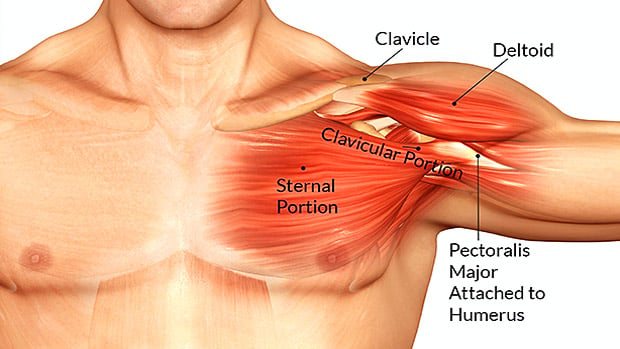
The main muscles surrounding the clavicle are:
- Pectoralis major — the large fan-shaped chest muscle
- Deltoids — This thick, triangular muscle covers the shoulder joint.
- Trapezius — the triangle-shaped muscle between the neck and upper back
These muscles work together with the clavicle to allow the arms to move in multiple planes of motion.
10 Best Collarbone Strengthening Exercises
Try these 10 best collarbone exercises to keep your shoulders strong and stable.
1. Shoulder Shrugs
Shoulder shrugs are a simple yet effective exercise that strengthens the shoulders, upper back, and neck muscles. Shrug can help reduce pain and discomfort by strengthening these muscles.
It specifically targets the upper trapezius muscle. It is located at the top of your back and is responsible for shoulder elevation, neck support, and a strong collarbone.
You can do shoulder shrugs with dumbbells, barbells, or resistance bands.
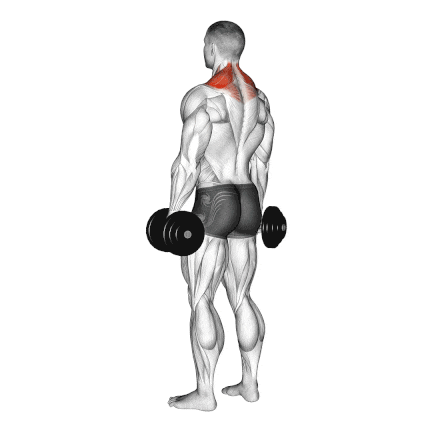
How to Do
- Stand up straight with a dumbbell in each hand, letting them hang naturally at your sides.
- Your feet should be about shoulder-width apart, and your palms should be facing your body
- Keep your arms straight and lift your shoulders as high as you can. Avoid rolling your shoulders forward or backwards.
- Hold this elevated position for a moment.
- Gently lower your shoulders back to the starting position.
- Do 10–15 reps and 3–4 sets.
2. Upright Row
The upright row is a solid exercise for building up the muscles around your collarbones and specifically targeting the posterior chain muscles, including the shoulders and upper back.
It gives that nice rounded cap to the shoulder and contributes to the overall developed look of that shoulder area
Research shows that it is one of the best exercises for building shoulder strength and stability.
Here are seven different ways to do an upright row using different equipment.
- Barbell Upright Row
- Dumbbell Upright Row
- Cable Upright Row
- One-Arm Dumbbell Upright Row
- Smith Machine Upright Row
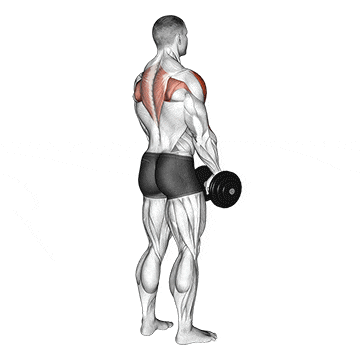
How To Do
- Stand with your feet shoulder-width apart.
- Hold a dumbbell in each hand with an overhand grip (palms facing your body).
- Lead with your elbows. Pull the dumbbells straight up towards your chin. Keep the weights close to your body as you lift them.
- Your elbows should travel up and out, ending higher than your wrists at the movement’s top.
- Once the dumbbells reach the top of the movement, pause briefly for a peak contraction.
- Slowly lower the dumbbells back down along the same path to the starting position.
3. Push Ups
Push-ups are a classic bodyweight exercise that engages multiple muscle groups in the upper body, including the chest, shoulders, triceps, and the muscles around the collarbone.
If standard push-ups are too challenging right now, that is perfectly fine. Start with incline push-ups (place your hands on a sturdy elevated surface like a bench, table, or even a wall). The higher the surface, the easier it is.
There are many ways to do push-ups, including different foot positions and angles. The most common ones are:
Beginners can start with knee push-ups or inclined push-ups. Advanced individuals can try variations like diamond push-ups or decline push-ups.
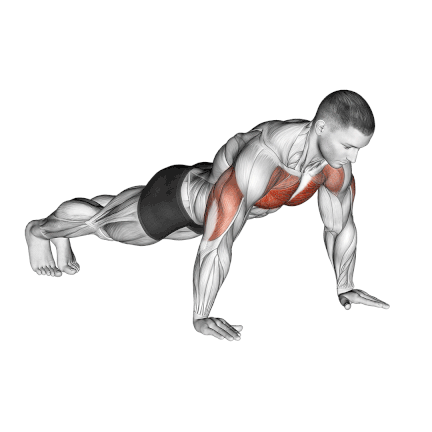
How To Do
- Start in a high plank position. Place your hands firmly on the ground, roughly shoulder-width apart (or slightly wider), directly beneath your shoulders.
- Your body should form a straight line from your head to your heels. Engage your core (tighten your abs) and glutes to prevent your hips from sagging or hiking up too high.
- Bend your elbows and slowly lower your entire body towards the floor. Think about bringing your chest towards the ground, not just your face.
- Once your chest is close to the floor (or as low as you can go with good form), push powerfully through your palms, straightening your elbows to return to the starting high plank position.
4. Shoulder Press
The shoulder press is for anyone wanting stronger shoulders, better posture, or a more defined upper body—from beginners to beasts. It’s awesome for home workouts (dumbbells or bodyweight variations) or gym sessions.
It strengthens and tones the shoulder and collarbone area and works multiple upper body muscles, including the deltoids, triceps, and trapezius.
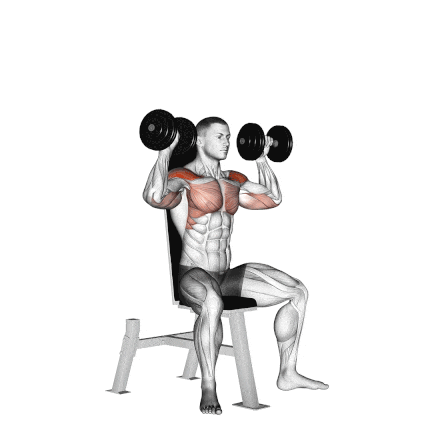
How To Do
- Grab a dumbbell in each hand. A safe way to get them into position is to rest them on your knees, then use your knees to help “kick” them up one at a time to shoulder height.
- Keep your chest up, shoulders back, and gaze straight ahead. Tighten your core and glutes to form a solid base—do not arch your lower back.
- Press the weights up until your arms are fully extended above your head.
- Slowly lower the dumbbells back down along the same path, resisting the weight.
- Perform a set number of repetitions, typically 8-12.
6. Resistance Band Pull Apart
This movement can be done on shoulder day, as it targets the rear delts. However, I also like to hit it on a back day as the rear delts often need to double the weekly work.
The bands pull apart will work your rhomboids, rear delts, and traps. It’s a great shoulder and upper back exercise.
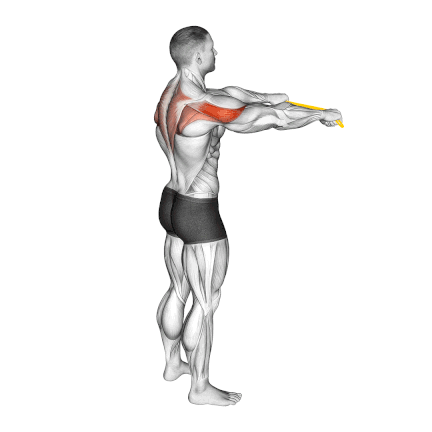
How To Do
- Stand with your feet shoulder-width apart, and keep a slight knee bend.
- Hold the exercise band in front of you with your hands slightly lower than your shoulders.
- Keep your elbows slightly soft to avoid hyperextending the joint. Keep your elbows up so you can work your upper back muscles.
- Pull the band apart and squeeze your rhomboids by squeezing the shoulder blades together and opening the arms out to either side.
- Return to start and repeat, keeping tension on the band the entire time.
6. Wall Slides
Scapular wall slides are one of the basic exercises to improve shoulder rotation, upper back activation, and scapular mobility.
Working out this muscle group helps keep your collarbone strong and healthy.
The study found that the group that did wall slide exercises significantly decreased pain in the rotator cuff muscles after four weeks.
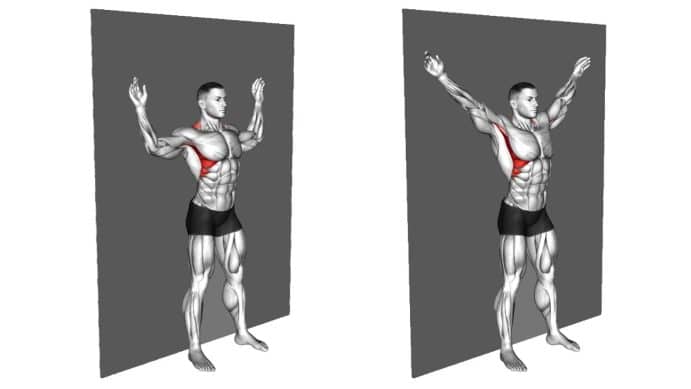
How To
- Stand with your back flat against a wall.
- Leave a slight bend in your knees so that your legs are not fully locked.
- Slowly slide your arms up the wall until your arms are above your shoulders and 90 degrees from your torso.
- With your chest open and back tall, squeeze the muscles of your midback as you slide your arms down toward your shoulders.
- Keep your back and the backs of your palms, wrists, and elbows pressed up against the wall.
- Slowly slide your arms down the wall. Elbows are slightly lower than shoulder height.
Know More: Plank Exercise: Benefits, Variations, Muscles Worked, How To Do And Tips
7. Dumbbell Lateral Raise
If the shoulder press is about building the overall mass and front shoulders, the lateral raise is your go-to for building shoulder width. It specifically targets your lateral or middle deltoid muscles.
Building up this part of your shoulder creates a rounded look. This makes your shoulders look broader and helps highlight your collarbones.
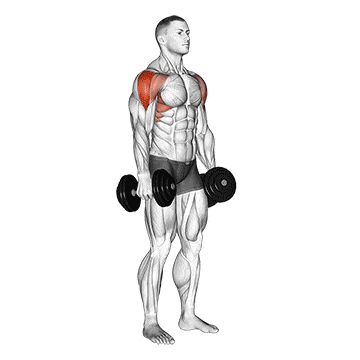
How To Do
- Stand tall with a dumbbell in each hand, resting at your sides. Your palms should face your body (neutral grip).
- Keep your feet about shoulder-width apart, knees slightly bent, and core engaged.
- Maintain good posture—chest up, shoulders back and down.
- Raise your arms straight out to your sides. Imagine you’re trying to push the walls away from you.
- Lift the dumbbells until your arms are approximately parallel to the floor (shoulder height).
- Pause briefly at the top. Focus on feeling the contraction in the side of your shoulders.
- Slowly lower the dumbbells back to the starting position.
8. Chest Press
The chest press is a strength training exercise that primarily targets the pectoral muscles (chest), triceps, shoulders, and, to some extent, the muscles near the collarbone.
It can be performed using various equipment, such as a chest press machine, dumbbells, or a barbell.
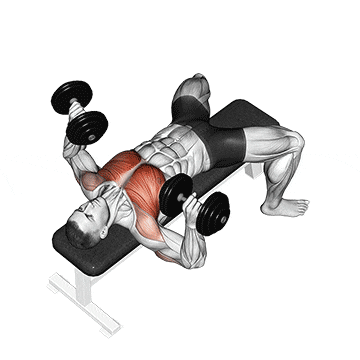
How To Do
- Lie flat on a bench with your feet firmly planted on the floor.
- Hold a dumbbell in each hand, with your palms facing forward.
- Slowly extend your arms and push the dumbbells above your chest while exhaling.
- Pause for a moment at the top of the movement.
- Then, slowly lower the dumbbells back down towards your chest while inhaling.
- Don’t allow the dumbbells to collide at the top of each rep – bouncing them together may cause you to lose stability within the shoulder and injure yourself.
- Do 2 to 3 sets of 8 to 15 repetitions
9. YTWL Exercises
These exercises focus on the shoulder and back muscles, mainly the middle and lower part of the trapezius.
They also hit all the rotator cuff muscles, including the infraspinatus, subscapularis, teres minor, and supraspinatus muscles.
These work together to stabilize the shoulder and move the arm. It is essential to include these exercises in your trap workout regimen.
How To Do
- Gently exhale and slowly lift your arms off the floor (maintain a formation of the letter “I”), with palms facing inward.
- Keep your head aligned with your thoracic (upper) spine.
- Focus on using your shoulders to generate most of the lift, although some low back extension (arching) is acceptable.
Know More: Bodyweight Trap Exercises That You Can Do At Home Without Equipment
10. Shoulder Blade Squeeze
Shoulder blade squeeze, also known as scapular squeeze, is an exercise that focuses on strengthening the muscles responsible for retracting the shoulder blades.
It primarily targets the upper back muscles, including the rhomboids and middle trapezius.
It helps prevent rounded shoulders and improve posture by strengthening the muscles that pull the shoulder blades back.
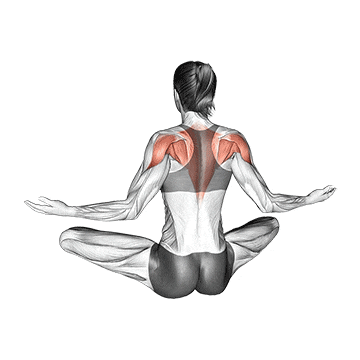
How To Do
- Start by sitting or standing upright with good posture.
- Relax your arms by your sides.
- Gently squeeze your shoulder blades together by retracting them towards your spine.
- Imagine pinching a pencil or holding a small object between your shoulder blades.
- Hold the squeeze for a few seconds while maintaining good posture.
- Relax and repeat the movement for the desired number of repetitions.
- While performing the exercise, try to keep your neck and other muscles as relaxed as possible.
References
- Andersen CH, Andersen LL, Gram B, Pedersen MT, Mortensen OS, Zebis MK, Sjøgaard G. Influence of frequency and duration of strength training for effective management of neck and shoulder pain: a randomised controlled trial. Br J Sports Med. 2012 Nov;46(14):1004-10. doi: 10.1136/bjsports-2011-090813. Epub 2012 Jun 29. PMID: 22753863; PMCID: PMC3596862.

Manish is a NASM-certified fitness and nutrition coach with over 10 years of experience in weight lifting and fat loss fitness coaching. He specializes in gym-based training and has a lot of knowledge about exercise, lifting technique, biomechanics, and more.
Through “Fit Life Regime,” he generously shares the insights he’s gained over a decade in the field. His goal is to equip others with the knowledge to start their own fitness journey.

